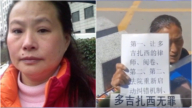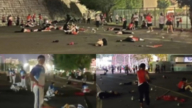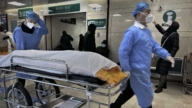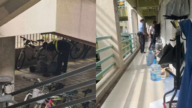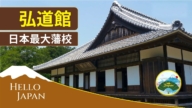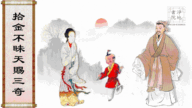【新唐人2012年2月6日讯】四川藏区在中国新年期间接连发生大规模藏民抗议示威事件,有多名藏人被打死,数十人受伤。当局的镇压行动导致藏人抗议不止。2月3号,四川甘孜州色达县再度传出3名藏人自焚,藏区局势再度紧绷。西藏问题专家指出,藏人对中共的高压政策已经到了忍无可忍的边缘。
据海外“西藏之声”组织2月4号公布,四川甘孜州色达县又有3名藏人为抗议中共统治自焚,其中一人死亡,2人严重烧伤。这使得自去年以来,因抗议中共西藏政策而自焚的藏人增加到至少19人。去年三月,20岁的西藏僧侣彭措,以自焚抗议阿坝州格尔登寺遭中共政府血腥镇压。
“纽约哥伦比亚大学”研究西藏问题的专家罗伯特.伯纳特向《美国之音》表示,现在藏民地区的民族主义情绪估计比历史上任何时期都要强烈。这也许是中共在过去15年中,对藏区采取越来越严苛和高压的政策导致的结果。西藏流亡政府新领导人洛桑森格也指出,自焚浪潮显示了生活在中国的藏人已行将绝望。
达赖喇嘛驻北美代表处工作人员,西藏问题分析员贡嘎扎西指出,中共如果不改变西藏政策,恐怕西藏今年的局势都不会好转。
达赖喇嘛驻纽约办事处分析员贡嘎扎西:“这个事情证明了现在整个藏民族无法接受中共政府目前在西藏所实行的政策。哪里有镇压,哪里就有反抗,所以这是非常简单的一个道理。”
2012中国新年伊始,藏区民众抗议浪潮持续高涨。年初一,炉霍县约万名藏民在霍尔广场示威抗议,警方开枪导致两名藏民死亡。年初二,藏民再度示威,约25人被拘留遭受拷问。示威发生后,大约四千多名军队进驻炉霍县,当地通讯被封锁,上百名藏民被捕。
挪威《西藏之声》报导,1月26号,警方拘捕了班玛县一名试图自焚的僧人。随后数百名藏民聚集在亚尔堂乡乡政府办公室前,降下中共国旗后焚烧并高呼口号,当局调派16辆满载军警的军车进行镇压,6名藏民被拘捕。
冲突发生后,中共严密封锁藏区甘孜州、阿坝州等地互联网以及通讯设备,外国人及外国记者被拒绝进入。同时,《人民日报》旗下《环球时报》和《新华社》对藏区抗议事件作出的报导声称,藏民暴徒冲击派出所和入民房砸抢,造成五名警察受伤。对此国际声援西藏运动组织更正说,事实上至少有3名藏民死亡。
贡嘎扎西认为,大陆境内所有的媒体都是政府在掌控,官方的版本和数字都无法令人相信。
研究西藏问题的美国华裔学者李江琳,对于官方的报导也表示质疑。
美国华裔学者李江琳:“另一方面的声音发不出来,那么能有官方来做这样一个单方面报导的话,我只能对这些都存疑。”
《自由西藏学生运动》组织日前公布了一组在色达藏区拍摄的照片,图片中,防暴警察在藏区殴打和拖拽流血的示威者。这个组织表示,照片证明了中共当局残暴对待手无寸铁的和平示威者。
贡嘎扎西:“大陆境内的民众也有多么残酷的镇压,更何况在西藏呢,所以发生这类事情的时候他一律封锁消息,但是现在网络世界,你没有办法封锁这些事情。”
李江琳指出,1956年到1962年期间,中共为统治西藏大肆杀戮藏民,导致藏区人口急剧下降。
目前,中共当局已经增派武警部队进入藏区。西藏流亡政府总理洛桑森格2月2号表示,他对此“感到非常不安”。他呼吁联合国派遣调查团进入藏区。
新唐人记者易如、许旻、王明宇采访报导。
Tibetans Demonstrated on Chinese New Year
3 More Self-Immolation Protests against CCP
In Sichuan Tibetan residence area, several large-scale protests
took place during Chinese New Year.
A number of Tibetans were killed and dozens were injured.
The crackdown on Tibetan people from Chinese Communist
Party (CCP) trigged more and more protests.
3 more Tibetan self-immolations in Seda County, Ganzi State,
Sichuan province was reported on 3rd Feb.
Tibetan areas are now under great tension.
Specialists on Tibetan issues think that Tibetan people are at
their limit on the crackdown by the CCP.
The overseas organization “Voice of Tibet" made
an announcement on Feb. 4th.
It stated 3 more Tibetan Self-immolations occurred
in protest against the crackdown by the CCP.
One person died and 2 people were severely burned.
Since last year, 19 Tibetan people have set themselves
on fire in protest against the Chinese regime policy in Tibet.
Phuntsok was a 20-year-old Tibetan monk.
In March 2011, he set himself on fire protesting against the
Chinese authorities’ tight control over Karma Monastery.
Robert Barnett, a Tibetan scholar, told Voice of America that
now the ethnic sentiments of Tibetan people are
much stronger any time in history;
the result of 15-years of more and
more brutal crackdown by the CCP.
Lobsang Sangay is the new leader of the Tibetan government
in exile.
He also pointed out that more and more self-immolations show
the Tibetan people living in China are desperate with life there.
Gompo Tashi is the representative of Dalai Lama in America.
He said that if CCP doesn’t change its policy in Tibet,
the situation in Tibet will be worse.
Gompo Tashi: The self-immolation events manifest that the
Tibetan ethnic group can’t accept China regime policy in Tibet.
Wherever there is crackdown, there is resistance.
It’s just this simple.
At the beginning of 2012, the protests from Tibetan residence
area got more and more intensive.
On the first day of 2012 Chinese New Year, about 10,000
Tibetan people protested in Hall Square in Luhuo County.
Security forces opened fire on ethnic Tibetan protesters,
killing two of them.
On the second day of 2012 Chinese New Year,
Tibetan people protested again.
About 25 of them were arrested and tortured. After the protest,
about more than 4,000 troops were stationed in Luhuo County.
The local communication ways have all been blocked off.
Hundreds of Tibetan people were arrested.
Norwegian Voice of Tibet reported on Jan 26th, that police
arrested a monk in Banma County trying to self immolate.
Later on hundreds of Tibetan people gathered in front of the
government office building in Yaertang town.
They burned the flag of China and shouted slogans.
16 military vehicles full of soldiers were sent there by the
Chinese regime to suppress the protest. 6 Tibetan people were arrested.
After the event, CCP blockaded the Tibetan residence area
around Ganzi and Aba.
Internet and other communication ways have been cut off.
Foreigners and Foreign reporters were refused into the area.
Meanwhile, Global Times and Xinhua Agency reported a
strikingly different narrative.
Official reports say that Tibetan rioters attacked the police
station and broke into residents homes. Five police were injured.
Regarding this, the ‘International Campaign for Tibet’ made
a correction statement.
It says that at least 3 Tibetan people died in this event.
Gompo Tashi said all media within China are under Chinese
regime control.
The China official version of the news and numbers are all
un-trustable.
Li Jianglin is a scholar on Tibet issues. She also questioned
the Chinese official reports of the news.
Li Jianglin, “The voice from the other side cannot be heard.
There are only reports from the side of Chinese government.
Thus, I can’t fully believe those reports. ”
Recently ‘Students for a Free Tibet (SFT)’ publicized a group
of pictures taken in Seda Tibetan residence area.
In the picture, the security police were beating and dragging
the bleeding protester.
This organization says the pictures show the fact the Chinese
government brutally crack down on peaceful protesters.
Gompo Tashi: “China government also cracks down other
protesters in China, without mentioning Tibet.
When things like this happen, they always blockade the news.
However, in the internet era, there’s no way they can fully
block it off.”
Li Jianglin says that from 1956 to 1962, in order to control
Tibet, the CCP killed a large number of Tibetan people.
That’s why the population in Tibet decreased sharply.
Recently, the Chinese regime has sent more soldiers to
Tibetan residence area.
Lobsang Sangay is the new prime minister of Tibet
Government in exile.
He said he feels very uncomfortable about
what the Chinese regime did.
He appeals for help from the United Nations
to send reporters to Tibetan residence areas.
NTD Reporters Yi Ru, Xu Yan and Wang Mingyu


